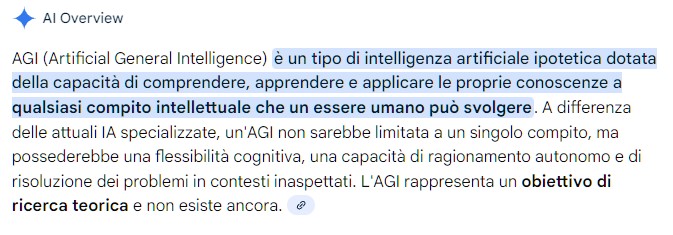
Redazione RHC : 25 November 2025 07:24
On the porch of an old cabin in Colorado, Mark Gubrud , 67, gazes absently into the distant dusk, his phone beside him, the screen still on a news app.
As we know, tech giants Microsoft and OpenAI announced a surprising multi-billion dollar deal to build AGI, paving the way for OpenAI’s $1 trillion IPO.
Gubrud smiled wryly: it was he who coined the term AGI, so precious today, 28 years ago.
However, he gained neither glory nor riches from it.
Gubrud sighed: “It’s already conquering the entire world and its value amounts to trillions of dollars. I’m 67 years old, I have a useless doctorate, I have no fame, no money, and no job.”
In 1997, Gubrud was a graduate student at the University of Maryland.
He spent his days buried in the noisy water pumps in the laboratory basement, “sitting there reading all the information I could find.”
That year he became fascinated by cutting-edge nanotechnology, captivated by its infinite possibilities, and keenly aware of its potential threats.
A follower of Eric Drexler , he believed that technological discoveries in the microscopic world could revolutionize human society, not only in terms of progress, but also in terms of the potential for catastrophic weapons of war.

With these concerns in mind, Gubrud presented and read a paper entitled “Nanotechnology and International Security” at the Fifth Frontier Conference on Molecular Nanotechnology in 1997.
In that article, he warned that breakthroughs in various cutting-edge technologies would redefine international conflicts and that their destructive power could even surpass that of a nuclear war.
He called on all countries to “abandon their martial traditions” and use new technologies with caution in the military. To describe the most disruptive type of technology, he had to coin a new term. Goebold later explained: “I needed a term to distinguish the AI I was talking about from the AI known at the time.”
At that time, most AI systems were expert systems that solved specific problems in narrow domains , which clearly fell outside the type of comprehensive intelligence he was referring to.
This is how Goebold first proposed the concept of “Artificial General Intelligence (AGI).”
In the article, he compared AGI to the human brain: an AI system that rivals or surpasses the human brain in complexity and speed, is capable of acquiring and applying general knowledge, and can perform almost any task that requires human intelligence.
This definition is almost identical to what is meant by AGI today.

To emphasize the difference in this concept, he even specifically used the term “advanced general artificial intelligence” to distinguish it from the then-narrow concept of “weak artificial intelligence.”
At a time when the AI winter hadn’t yet ended, his article didn’t garner much circulation or impact. The young and impetuous Gubrud probably never imagined the wave his creation would later unleash.
With the dawn of the 21st century, the coldness in the field of artificial intelligence has gradually dissipated. A few astute researchers have begun to revive the dream of building truly intelligent machines.
In 1999, futurist Ray Kurzweil predicted in his book “The Age of Spiritual Machines” that artificial intelligence would reach the level of human intelligence around 2030.

This prediction found deep resonance in computer scientist Ben Goertzel.

He and his colleague Cássio Pennachin conceived the idea of compiling a collection of papers that explored how to evolve artificial intelligence beyond narrow domains like chess playing and making diagnoses, transforming it into a widely applicable form of intelligence.

Initially, they wanted to call this concept “real artificial intelligence” or “synthetic intelligence,” but they felt something was missing.
Goetzel then invited a group of like-minded young colleagues to exchange ideas for this “complete artificial intelligence” via a mailing list.
Among those taking part in the discussion were future renowned AI scholars, such as Shane Legg , co-founder and chief AGI scientist at Google DeepMind, Pei Wang, and Eliezer Yudkowsky.

One day, Shane Legg, who had recently graduated from his master’s degree, suggested to him via email: “Stop calling it ‘real AI’—that would be like slapping the entire AI industry in the face. If we’re talking about machines with general intelligence, then let’s call it Artificial General Intelligence, or AGI for short, which is easier to pronounce.”
This idea caught everyone’s attention.
Goertzel recalls that Wang Pei suggested changing the word order to “General Artificial Intelligence,” but the abbreviation GAI was ambiguous (it was pronounced similar to “gay” in English), so they decided to use AGI.
Since then, the term ” AGI ” has begun to appear frequently in online forums and articles.
Artificial general intelligence (AGI) has gradually taken the form of an independent and emerging research direction: the second AGI conference, a pioneering event, was held in 2006, and the academic journal Journal of Artificial General Intelligence was launched shortly thereafter. Goetzel’s edited collection of articles, Artificial General Intelligence, was published, further popularizing the concept.
However, just when this group of young people thought they had defined one of the most important terms of the 21st century, an unknown middle-aged man stepped forward. Around 2005 , in an online discussion within the AGI community, someone suddenly wrote:
” The term AGI was already in use in 1997. “
Everyone’s jaws dropped in surprise: “Who is this guy?”
A careful examination of the literature revealed that the person and his writings had indeed existed before: this person was none other than Mark Gubrud .
The unnamed student who was then sitting in the cellar writing his thesis seems to emerge from a corner of history, reminding future generations: I was the first to mention AGI.
Even Shane Legg admitted to this little incident many years later:
“Suddenly, someone came along and said, ‘Hey, I invented this term in ’97,’ and we were all shocked: ‘Who are you?’ After investigation, it turned out that he had actually written such an article. So, instead of saying we invented AGI, we should say we reinvented the term.”
Although its creator was rediscovered, the spread of the AGI concept was not affected. Even after this “rediscovery,” Gubrud’s career failed to take off in academic circles. He held various positions and wrote very few articles. He did not become a pioneer in the field of AGI, nor did he gain fame and fortune from it.
Instead, he remains committed to his mission of peace, publishing articles calling for a global ban on AI-based weapons, such as autonomous killer robots, leaving humanity a way out of the technological arms race.
Even now, Gubrud spends most of his time at home, caring for his elderly mother, living a simple, humble life. But the world of AGI, which he himself christened, has been completely transformed.
Artificial general intelligence, once a new and confusing term, has now become a highly sought-after and lucrative brand in the tech world. For Silicon Valley entrepreneurs and investors, AGI is practically synonymous with the next gold mine.
There’s a sense of urgency in the AI community: whoever masters AGI first will dominate the future. American politicians have even declared that if the United States doesn’t achieve AGI before China, it will be “finished.”
This AGI craze has not only boosted market valuations, but has also spurred astronomical investment: in pursuit of AGI, giants like Meta, Google, and Microsoft have invested hundreds of billions of dollars in expanding computing power, enriching chipmaker Nvidia and pushing the company’s market value to $5 trillion at one point.
In just over two decades, AGI has gone from a little-known term in academic articles to a focal point for capital and public opinion. However, the more complex a concept becomes, the more blurred its boundaries become. On the one hand, companies like OpenAI are eager to feature AGI’s perspectives in their marketing;
On the other hand, they argued that AGI does not have a clear standard and is not worth emphasizing.
In August 2025, OpenAI CEO Altman publicly stated in an interview: “I think the term ‘AGI’ has become less useful.”

Microsoft CEO Satya Nadella also said in the podcast that claiming to have reached a certain AGI milestone is “purely absurd hoax.”
Logically, these industry leaders are downplaying the allure surrounding AGI, as if they fear excessive external expectations.

Ironically, the AGI has been given some of the relevance of a financial indicator.
According to insiders, OpenAI has even discussed another criterion for “achieving AGI”: when its model is deemed capable of generating $100 billion in profits for investors, it can be considered to have achieved “sufficient AGI.”
In commercial contracts, “AGI” has almost become a profit-driven transformation: it is no longer just a technological milestone, but also a bargaining chip in the game of capital . Once activated, it leads to a massive reorganization of profits.
This reality left Gubrud with mixed feelings.
He coined the term “AGI” to warn the world of the risk of the arms race degenerating into an uncontrolled spiral. Now, the concept has become popular amid the clamor of profit-seeking and has received various interpretations, both convenient and utilitarian.
Gubrud knew full well that he could not return to that cellar to continue his academic research, nor could he change the fortunes of the giants chasing their AGI dreams. But every time he sees news stories about AGI ( those familiar three letters that often appear in headlines ), he can’t help but stop and take a second look.
Despite the changes in circumstances, one thing remains the same: his concerns and advice regarding AGI have never been as incisive as they are today.
Follow us on Google News to receive daily updates on cybersecurity. Contact us if you would like to report news, insights or content for publication.
 Redazione
Redazione